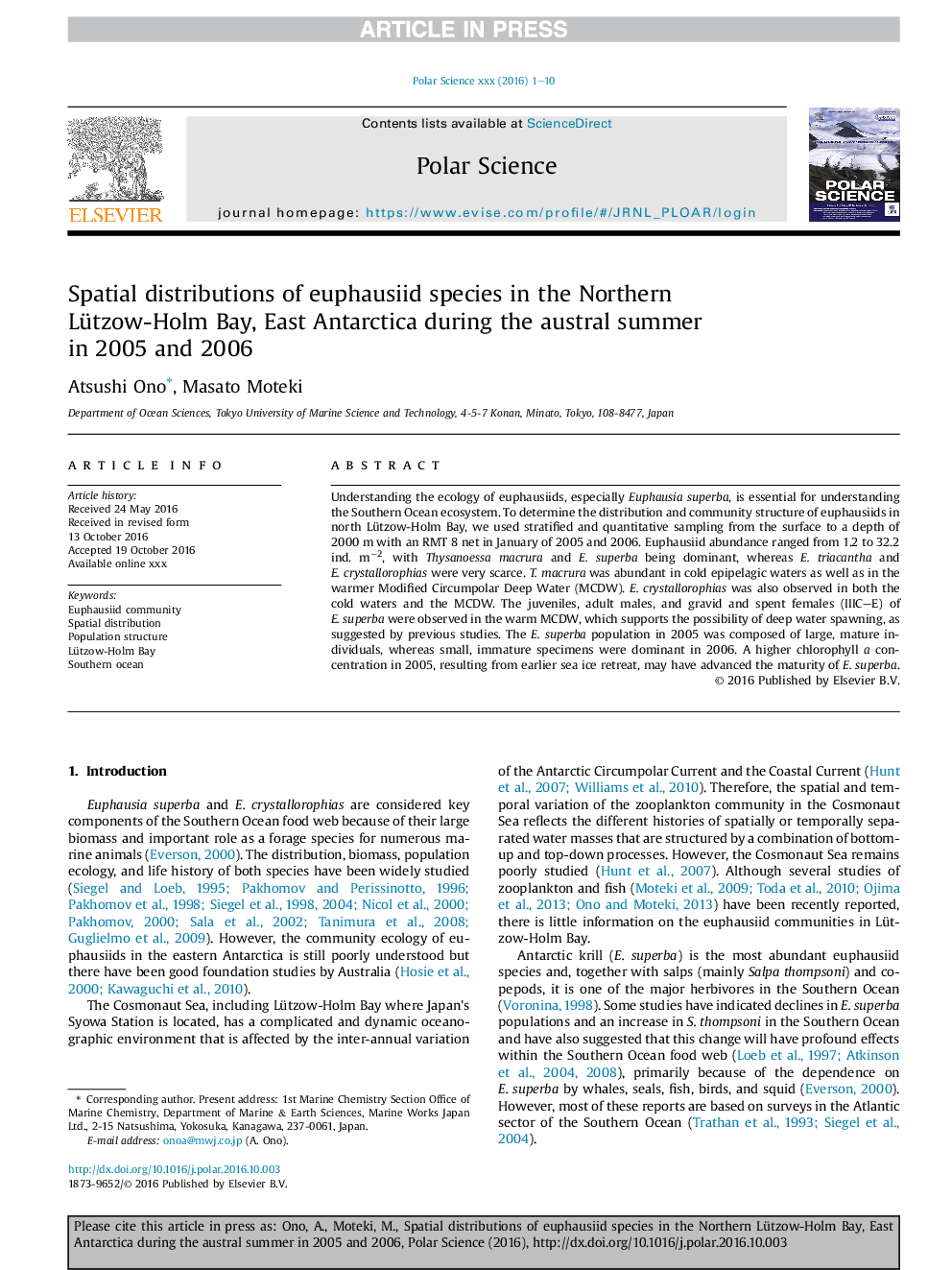| Article ID | Journal | Published Year | Pages | File Type |
|---|---|---|---|---|
| 5780567 | Polar Science | 2017 | 10 Pages |
Abstract
Understanding the ecology of euphausiids, especially Euphausia superba, is essential for understanding the Southern Ocean ecosystem. To determine the distribution and community structure of euphausiids in north Lützow-Holm Bay, we used stratified and quantitative sampling from the surface to a depth of 2000 m with an RMT 8 net in January of 2005 and 2006. Euphausiid abundance ranged from 1.2 to 32.2 ind. mâ2, with Thysanoessa macrura and E. superba being dominant, whereas E. triacantha and E. crystallorophias were very scarce. T. macrura was abundant in cold epipelagic waters as well as in the warmer Modified Circumpolar Deep Water (MCDW). E. crystallorophias was also observed in both the cold waters and the MCDW. The juveniles, adult males, and gravid and spent females (IIIC-E) of E. superba were observed in the warm MCDW, which supports the possibility of deep water spawning, as suggested by previous studies. The E. superba population in 2005 was composed of large, mature individuals, whereas small, immature specimens were dominant in 2006. A higher chlorophyll a concentration in 2005, resulting from earlier sea ice retreat, may have advanced the maturity of E. superba.
Related Topics
Physical Sciences and Engineering
Earth and Planetary Sciences
Earth and Planetary Sciences (General)
Authors
Atsushi Ono, Masato Moteki,
